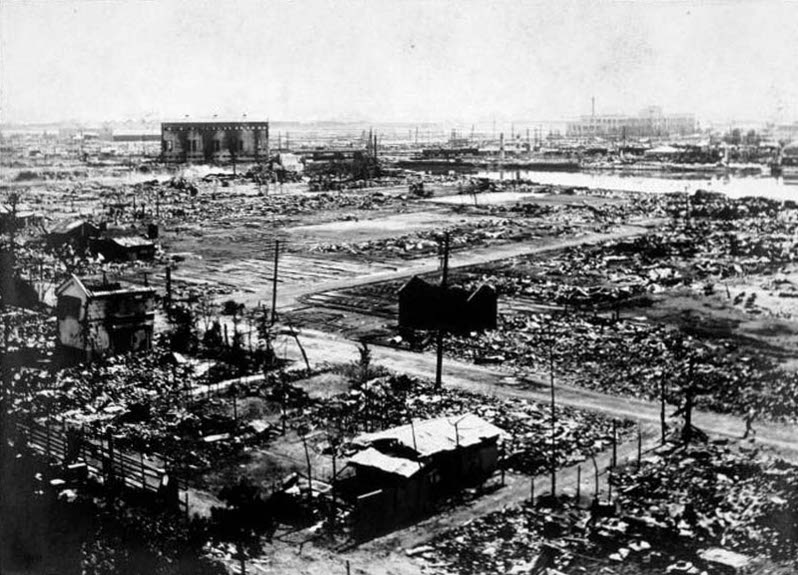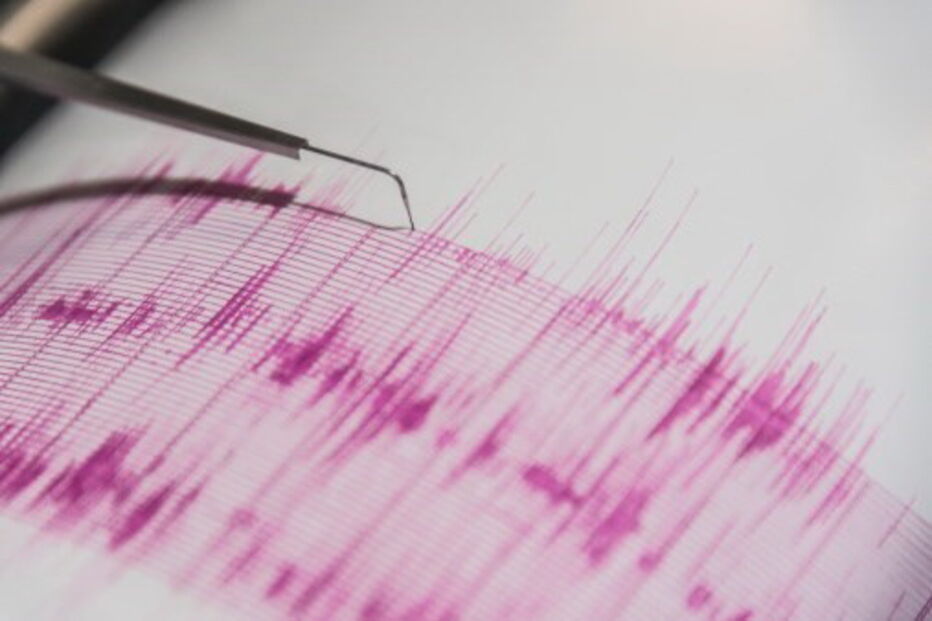19 de septiembre
O Curso de Geologia de 85/90 da Universidade de Coimbra escolheu o nome de Geopedrados quando participou na Queima das Fitas. Ficou a designação, ficaram muitas pessoas com e sobre a capa intemporal deste nome, agora com oportunidade de partilhar as suas ideias, informações e materiais sobre Geologia, Paleontologia, Mineralogia, Vulcanologia/Sismologia, Ambiente, Energia, Biologia, Astronomia, Ensino, Fotografia, Humor, Música, Cultura, Coimbra e AAC, para fins de ensino e educação.
19 de septiembre
Postado por
Fernando Martins
às
00:04
0
bocas
![]()
Marcadores: Cumbre Vieja, Ilhas Canárias, La Palma, sismo, sismos vulcânicos, vulcanismo, Vulcanologia, Vulcão
After supper, we went to sleep as usual: about ten o'clock, and in the night I was awakened by the most tremendous noise, accompanied by an agitation of the boat so violent, that it appeared in danger of upsetting ... I could distinctly see the river as if agitated by a storm; and although the noise was inconceivably loud and terrific, I could distinctly hear the crash of falling trees, and the screaming of the wild fowl on the river, but found that the boat was still safe at her moorings.
By the time we could get to our fire, which was on a large flag in the stern of the boat, the shock had ceased; but immediately the perpendicular banks, both above and below us, began to fall into the river in such vast masses, as nearly to sink our boat by the swell they occasioned ... At day-light we had counted twenty-seven shocks.
On the 16th of December, 1811, about two o'clock, a.m., we were visited by a violent shock of an earthquake, accompanied by a very awful noise resembling loud but distant thunder, but more hoarse and vibrating, which was followed in a few minutes by the complete saturation of the atmosphere, with sulphurious vapor, causing total darkness. The screams of the affrighted inhabitants running to and fro, not knowing where to go, or what to do—the cries of the fowls and beasts of every species—the cracking of trees falling, and the roaring of the Mississippi— the current of which was retrograde for a few minutes, owing as is supposed, to an irruption in its bed— formed a scene truly horrible.
On the night of 16th November [sic], 1811, an earthquake occurred, that produced great consternation amongst the people. The centre of the violence was in New Madrid, Missouri, but the whole valley of the Mississippi was violently agitated. Our family all were sleeping in a log cabin, and my father leaped out of bed crying aloud "the Indians are on the house" ... We laughed at the mistake of my father, but soon found out it was worse than the Indians. Not one in the family knew at the time that it was an earthquake. The next morning another shock made us acquainted with it, so we decided it was an earthquake. The cattle came running home bellowing with fear, and all animals were terribly alarmed on the occasion. Our house cracked and quivered, so we were fearful it would fall to the ground. In the American Bottom many chimneys were thrown down, and the church bell in Cahokia sounded by the agitation of the building. It is said the shock of an earthquake was felt in Kaskaskia in 1804, but I did not perceive it. The shocks continued for years in Illinois, and some have experienced it this year, 1855.
Postado por
Fernando Martins
às
02:14
0
bocas
![]()
Marcadores: crise sísmica, New Madrid, sismo, sismologia, USA
Hoje, às 00.38 horas, foi sentido um sismo na região centro de Portugal (e na raia espanhola). Com epicentro entre Carrapichana e Vila Boa do Mondego (Celorico da Beira), segundo o IPMA, teve magnitude 4,1 na escala de magnitudes de Richter e o hipocentro foi a 23 km de profundidade - dados preliminares. Deve ter tido intensidade IV/V na zona epicentral...
| Data/hora (UTC) | Latitude | Longitude | Profundidade | Magnitude | Referência | Fonte |
|---|---|---|---|---|---|---|
| 2025-12-13 00:38:10 | 40.609 N | 7.451 W | 23 km | 4.1 | SW Celorico da Beira | IPMA |
Registo no Geofone de Manteigas
Postado por
Fernando Martins
às
01:09
0
bocas
![]()
Marcadores: Celorico da Beira, sismo

O Governador Aécio Neves nos escombros da casa onde morreu a vítima do sismo que destruiu dezenas de casas
(imagem daqui)
Postado por
Fernando Martins
às
00:15
0
bocas
![]()
Marcadores: Brasil, Itacarambi, sismo
| Rank | Date | Location | Event | Magnitude |
|---|---|---|---|---|
| 1 | May 22, 1960 | 1960 Valdivia earthquake | 9.4–9.6 | |
| 2 | March 27, 1964 | 1964 Alaska earthquake | 9.2–9.3 | |
| 3 | December 26, 2004 | 2004 Indian Ocean earthquake | 9.2–9.3 | |
| 4 | March 11, 2011 | 2011 Tōhoku earthquake | 9.0–9.1 | |
| 5 | November 4, 1952 | 1952 Severo-Kurilsk earthquake | 9.0 |
Postado por
Fernando Martins
às
07:30
0
bocas
![]()
Marcadores: Anel de Fogo do Pacífico, Kamchatka, Rússia, sismo, sismologia, tsunami
Postado por
Fernando Martins
às
00:36
0
bocas
![]()
Marcadores: Califórnia, falha de Santo André, Loma Prieta, São Francisco, sismo, sismologia, USA

Afresco destruído, de Cimbabue, na Basílica de São Francisco
1997 Umbria and Marche earthquake
| Date | 11:40:26, September 26, 1997 (UTC) |
|---|---|
| Magnitude | 6.1 Mw |
| Depth | 10 km (6.2 mi) |
| Epicenter | 43.084°N 12.812°E |
| Countries or regions | Italy (Umbria, Marche) |
| Casualties | 11 dead 100 injured |
Postado por
Fernando Martins
às
00:28
0
bocas
![]()
Marcadores: afrescos, Assis, Basílica de São Francisco, Cimbabue, de Cimbabue, Itália, Marcas, na Basílica de São Francisco, pintura, sismo, sismologia, ÚmbriaAfresco destruído
19 de septiembre
Postado por
Fernando Martins
às
04:00
0
bocas
![]()
Marcadores: Cumbre Vieja, Ilhas Canárias, La Palma, sismo, sismos vulcânicos, vulcanismo, Vulcanologia, Vulcão, vulcão de Tajogaite

Postado por
Fernando Martins
às
01:02
0
bocas
![]()
Marcadores: Disaster Prevention Day, Grande Sismo de Kanto, Honshu, Japão, sismo, sismologia, Tóquio, Yokohama
in CIVISA
Postado por
Fernando Martins
às
21:41
0
bocas
![]()
Marcadores: Açores, falha Gloria, Santa Maria, São Miguel, sismo, zona de fratura Açores-Gibraltar
Postado por
Fernando Martins
às
14:19
0
bocas
![]()
Marcadores: Kamtchatka, Rússia, sismo, tsunami, vulcanismo, vulcão Klyuchevskoy
Postado por
Fernando Martins
às
12:50
0
bocas
![]()
Marcadores: geofone de Manteigas, Kamtchatka, Rússia, sismo, tsunami
O Instituto Português do Mar e da Atmosfera informa que no dia
25.07.2025 pelas 02.29 (hora local) foi registado nas estações da Rede
Sísmica do Continente, um sismo de magnitude 5.7 (Richter) e cujo
epicentro se localizou a cerca de 520 km a Norte-Noroeste do Porto
Santo.
Este sismo, de acordo com a informação disponível até ao momento,
não causou danos pessoais ou materiais e foi sentido com intensidade
máxima III/IV (escala de Mercalli modificada) no concelho de Santa Cruz
(Ilha da Madeira). Foi ainda sentido com menor intensidade nos concelhos
de Lisboa, Loures e Almada (Setúbal).
Registo no Geofone de Manteigas
Postado por
Fernando Martins
às
11:05
0
bocas
![]()
Marcadores: falha Gloria, Madeira, sismo, zona de fratura Açores-Gibraltar
Sismo de 5.8 na região da Madeira. Foi sentido em Lisboa e Setúbal
Não existiram danos pessoais ou materiais, segundo o IPMA.

Um sismo de magnitude 5,8 na escala de Richter foi esta sexta-feira sentido na região da Madeira e em algumas regiões do continente, sem causar danos ou pessoais ou materiais, segundo o IPMA.
Em comunicado, o Instituto Português do Mar e da Atmosfera (IPMA) adianta que o sismo teve o seu epicentro a cerca de 510 quilómetros a norte-noroeste da ilha do Porto Santo e foi registado na Rede Sísmica do Continente às 02.29 de esta sexta-feira.
Este sismo não causou danos pessoais ou materiais e foi sentido com intensidade máxima II-III (escala de Mercalli modificada) na região da Madeira e ainda com menor intensidade nas regiões de Setúbal e Lisboa.
in CM
Postado por
Fernando Martins
às
10:32
0
bocas
![]()
Marcadores: falha Gloria, Madeira, sismo, zona de fratura Açores-Gibraltar
